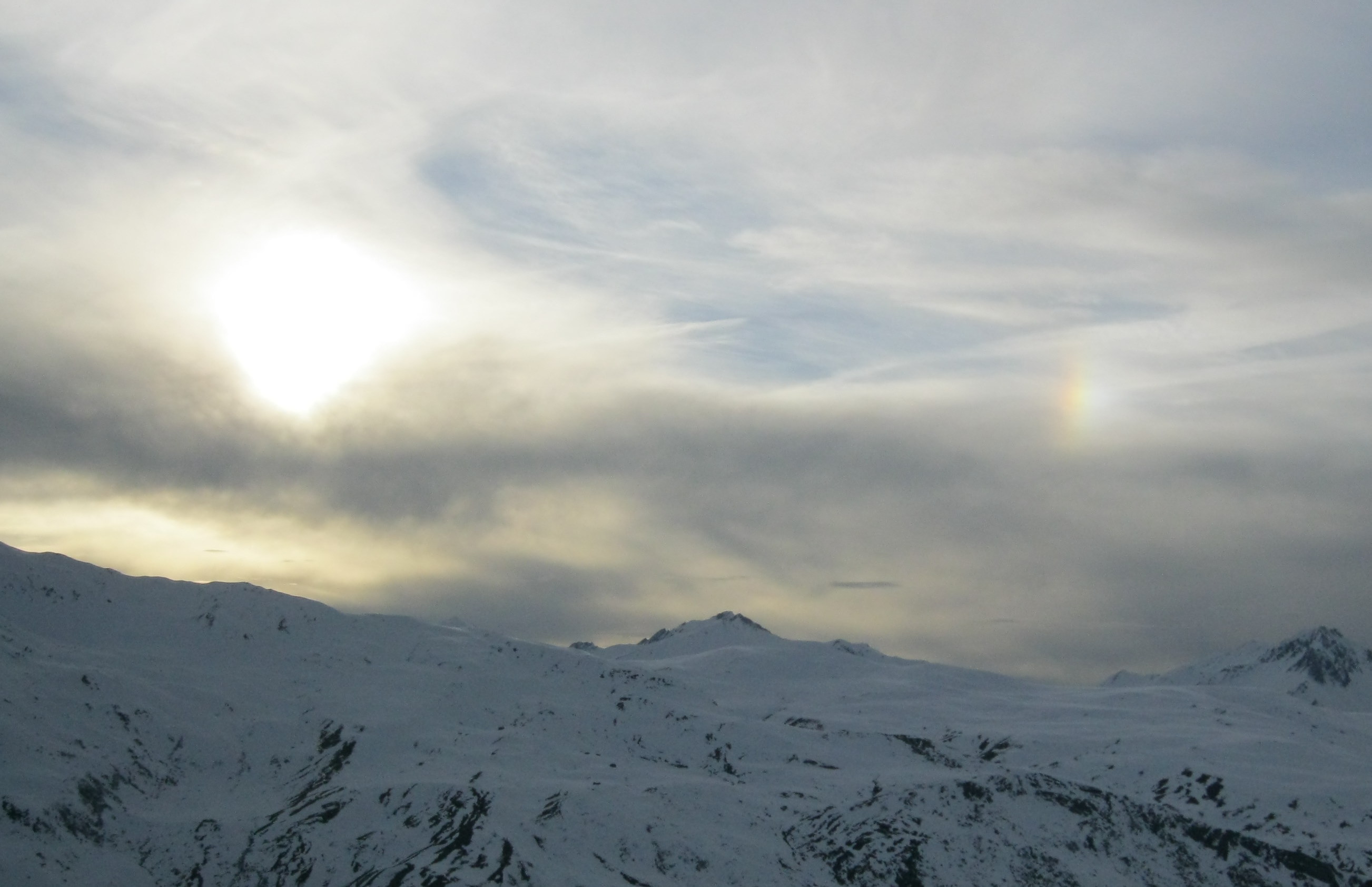|
Cooperative Institute For Climate Applications And Research
The Cooperative Institute for Climate Applications and Research (CICAR) was a major collaborative relationship between the National Oceanic and Atmospheric Administration (NOAA) Office of Oceanic and Atmospheric Research (OAR) and Earth Institute, Columbia University. The CICAR research themes were: * Modeling, understanding, prediction, and assessment of climate variability and change * Development, collection, analysis, and archiving of instrumental and Paleoclimate Paleoclimatology ( British spelling, palaeoclimatology) is the study of climates for which direct measurements were not taken. As instrumental records only span a tiny part of Earth's history, the reconstruction of ancient climate is important t ... data * Development of the application of climate variability and change prediction and assessment to provide information for decision makers and assess risk to water resources, agriculture, health, and policy CICAR was sunset at the end of a 10-year cooperative agreemen ... [...More Info...] [...Related Items...] OR: [Wikipedia] [Google] [Baidu] |
National Oceanic And Atmospheric Administration
The National Oceanic and Atmospheric Administration (abbreviated as NOAA ) is an United States scientific and regulatory agency within the United States Department of Commerce that forecasts weather, monitors oceanic and atmospheric conditions, charts the seas, conducts deep sea exploration, and manages fishing and protection of marine mammals and endangered species in the U.S. exclusive economic zone. Purpose and function NOAA's specific roles include: * ''Supplying Environmental Information Products''. NOAA supplies to its customers and partners information pertaining to the state of the oceans and the atmosphere, such as weather warnings and forecasts via the National Weather Service. NOAA's information services extend as well to climate, ecosystems, and commerce. * ''Providing Environmental Stewardship Services''. NOAA is a steward of U.S. coastal and marine environments. In coordination with federal, state, local, tribal and international authorities, NOAA manages the ... [...More Info...] [...Related Items...] OR: [Wikipedia] [Google] [Baidu] |
Office Of Oceanic And Atmospheric Research
Oceanic and Atmospheric Research (OAR) is a division of the National Oceanic and Atmospheric Administration (NOAA). OAR is also referred to as NOAA Research. NOAA Research is the research and development arm of NOAA and is the driving force behind NOAA environmental products and services aimed at protecting life and property and promoting sustainable economic growth. Research, conducted by programs within NOAA and through collaborations outside NOAA, focuses on enhancing the understanding of environmental phenomena such as tornadoes, hurricanes, climate variability, changes in the ozone layer, El Niño/La Niña events, fisheries productivity, ocean currents, deep sea thermal vents, and coastal ecosystem health. The origins of NOAA Research date back more than 200 years with the creation of the Survey of the Coast in 1807 by Thomas Jefferson. The Coast Survey, which became the U.S. Lake Survey office in 1841, was developed to undertake "a hydrographic survey of northwestern ... [...More Info...] [...Related Items...] OR: [Wikipedia] [Google] [Baidu] |
The Earth Institute
{{Infobox organization , name = The Earth Institute , image = Ei blue1.gif , map_size = , map_alt = , map_caption = , map2 = , type = , tax_id = , registration_id = , founded_date = {{Start date and age, 1995 , founder = Peter B. de Menocal , predecessor = , dissolved = , merged = , successor = , location = New York City, United States , addnl_location = 2910 Broadway, New York, NY 10025 , coordinates = , origins = , key_people = Alex N. Halliday (director) , area_served = , products = , services = , focus = , mission = , method = , revenue = , disbursed = , expenses = , endowment = , num_volunteers = , ... [...More Info...] [...Related Items...] OR: [Wikipedia] [Google] [Baidu] |
Climate Change
In common usage, climate change describes global warming—the ongoing increase in global average temperature—and its effects on Earth's climate system. Climate change in a broader sense also includes previous long-term changes to Earth's climate. The current rise in global average temperature is more rapid than previous changes, and is primarily caused by humans burning fossil fuels. Fossil fuel use, deforestation, and some agricultural and industrial practices increase greenhouse gases, notably carbon dioxide and methane. Greenhouse gases absorb some of the heat that the Earth radiates after it warms from sunlight. Larger amounts of these gases trap more heat in Earth's lower atmosphere, causing global warming. Due to climate change, deserts are expanding, while heat waves and wildfires are becoming more common. Increased warming in the Arctic has contributed to melting permafrost, glacial retreat and sea ice loss. Higher temperatures are also causin ... [...More Info...] [...Related Items...] OR: [Wikipedia] [Google] [Baidu] |
Paleoclimatology
Paleoclimatology (American and British English spelling differences, British spelling, palaeoclimatology) is the study of climates for which direct measurements were not taken. As instrumental records only span a tiny part of Earth's history, the reconstruction of ancient climate is important to understand natural variation and the evolution of the current climate. Paleoclimatology uses a variety of proxy (climate), proxy methods from Earth science, Earth and list of life sciences, life sciences to obtain data previously preserved within Rock (geology), rocks, sediments, boreholes, ice sheets, tree rings, corals, mollusc shell, shells, and Micropaleontology#Microfossils, microfossils. Combined with techniques to date the proxies, the paleoclimate records are used to determine the past states of Earth's atmosphere. The scientific field of paleoclimatology came to maturity in the 20th century. Notable periods studied by paleoclimatologists are the frequent glacial period, glaciatio ... [...More Info...] [...Related Items...] OR: [Wikipedia] [Google] [Baidu] |
Research Institutes In New York (state)
Research is "creative and systematic work undertaken to increase the stock of knowledge". It involves the collection, organization and analysis of evidence to increase understanding of a topic, characterized by a particular attentiveness to controlling sources of bias and error. These activities are characterized by accounting and controlling for biases. A research project may be an expansion on past work in the field. To test the validity of instruments, procedures, or experiments, research may replicate elements of prior projects or the project as a whole. The primary purposes of basic research (as opposed to applied research) are documentation, discovery, interpretation, and the research and development (R&D) of methods and systems for the advancement of human knowledge. Approaches to research depend on epistemologies, which vary considerably both within and between humanities and sciences. There are several forms of research: scientific, humanities, artistic, economi ... [...More Info...] [...Related Items...] OR: [Wikipedia] [Google] [Baidu] |
Meteorological Research Institutes
Meteorology is a branch of the atmospheric sciences (which include atmospheric chemistry and physics) with a major focus on weather forecasting. The study of meteorology dates back millennia, though significant progress in meteorology did not begin until the 18th century. The 19th century saw modest progress in the field after weather observation networks were formed across broad regions. Prior attempts at prediction of weather depended on historical data. It was not until after the elucidation of the laws of physics, and more particularly in the latter half of the 20th century the development of the computer (allowing for the automated solution of a great many modelling equations) that significant breakthroughs in weather forecasting were achieved. An important branch of weather forecasting is marine weather forecasting as it relates to maritime and coastal safety, in which weather effects also include atmospheric interactions with large bodies of water. Meteorological pheno ... [...More Info...] [...Related Items...] OR: [Wikipedia] [Google] [Baidu] |



